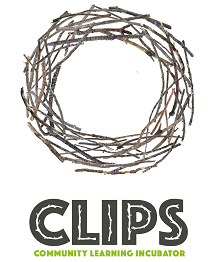Key Points
- The broad concept of structure refers to the practical level of how the group is organised in terms of governance, decision-making (related with access to information), property, legal and economic organisation.
- It also deals with interpersonal aspects related to rank and leadership, powerful motors of the group as well as potential sources of conflict and disruption
- The challenge is to create structures that are solid and coherent enough to support the group’s intention without oppressing or limiting the ideal vision in a rigid way
- The structure is an important tool also to protect the group from legal problems that may arise with the external world
- The key issue behind the structure is the decision making process, that should empower all members and distribute power in a balanced way
Overview
Structure means “building”, a metaphor for making protective walls around safe rooms; roofs, guiding aisles and doors that can be opened, closed, locked and unlocked.
The decisions to really put an effort into such structures are critical and difficult and often omitted in favour of more low-hanging fruit. The result is often that the community does not have a solid ‘building’ when it needs one, such as in cases of conflict.
Thus, groups that want to realise something lasting need to have clear agreements about structural issues like how to come to decisions, how to organise finances and legal representation. This is not always easy or self-evident. Sustainable communities often struggle when it comes to creating a structure that can be understood and supported by everyone, lingering in the dangerous misconceptions that spontaneous decisions and good vibrations will solve all problems, and that too much structure will become oppressive.
Just the opposite can also be said: failing to create the appropriate Legal Structures, address crucial Property Issues and collectively write a viable Constitution, opens the door to endless arguments that can – and often does – undermine the community’s foundations, and ends up in the law of the jungle. The creation and development of these structures is a living and somewhat organic process that should fit each stage of the project. In the same way, attention should be given to creation of regulations and feedback dynamics that provide information of efficiency at all levels.
Project structure supports common intention and creates a safe space both for the group and for individuals. Members need to learn how to create and sustain agreements that express group values.
Human interactions create group dynamics related to Rank and Leadership, which are not to be judged, denied or opposed, but rather understood and used in a conscious and effective way, thus avoiding abuses and preventing conflicts. Such issues are a powerful engine and they deeply impact people’s wellbeing and sense of belonging. On this level focus goes to the application power and opening up the willingness to share it.
The Governance and Decision-Making structure takes into account several levels, starting from Internal Organization (working groups and clear responsibilities), addressing the chosen Governance Model (Sociocracy, Holacracy, consensus, democracy), and identifying the Decision-Making method that best fits the group’s nature and contributes to its integrity.
The Structure of Communication and Meetings are crucial elements in any group project; it is very helpful to have basic training in Facilitation and Group Dynamics. Meetings are not only meant for decision making, they are also spaces of communication, sharing views, ideas, discussing projects, participating in co-creative processes. They are spaces for collective learning and mutual recognition.
Economic Organisation: Focus should be on the structure of necessary resources, both to initiate the project and to sustain it over time. Pay attention to the clarity between personal economy and common economy, and to the creation of agreements and transparent structures for management and regulation.
Property and Legal Organisation: Which principles affect the project around the subjects related to the management of shared property? One of the biggest mistakes a community project can make is to try to start community on a property that belongs to one or few people of the community. This will always cause an imbalance.
Constitution: As mentioned above, group project needs to create its own rules of the game, according to intentions and agreements that ensure the future of the project. The legal structure gives the group identity in the world and embodies its purpose.
Project Management, Delegation of Work: The group needs to define its mode of operation, division of tasks and sharing responsibilities. Operational structures rely on task definition, project design and program planning. All this serves implementation of decisions made on meetings or assemblies.
Feedback: A consistent feedback system ensures quality control and provides a good source of stimuli for improvement and celebration.





